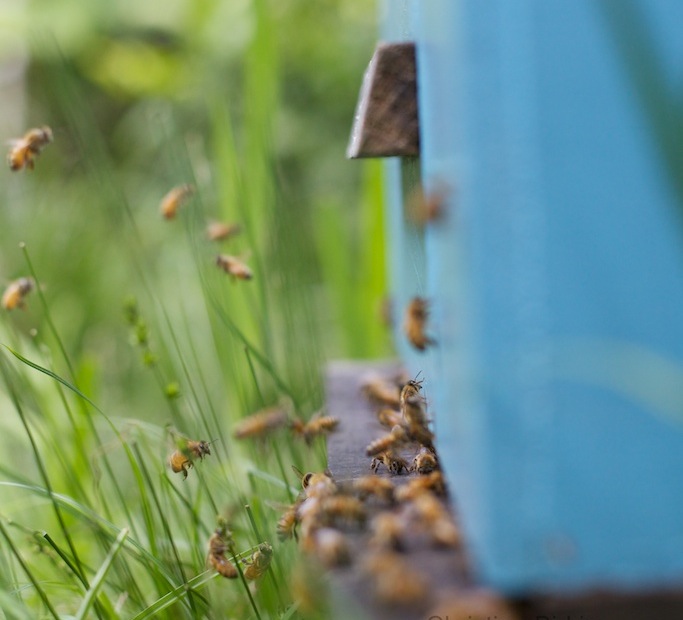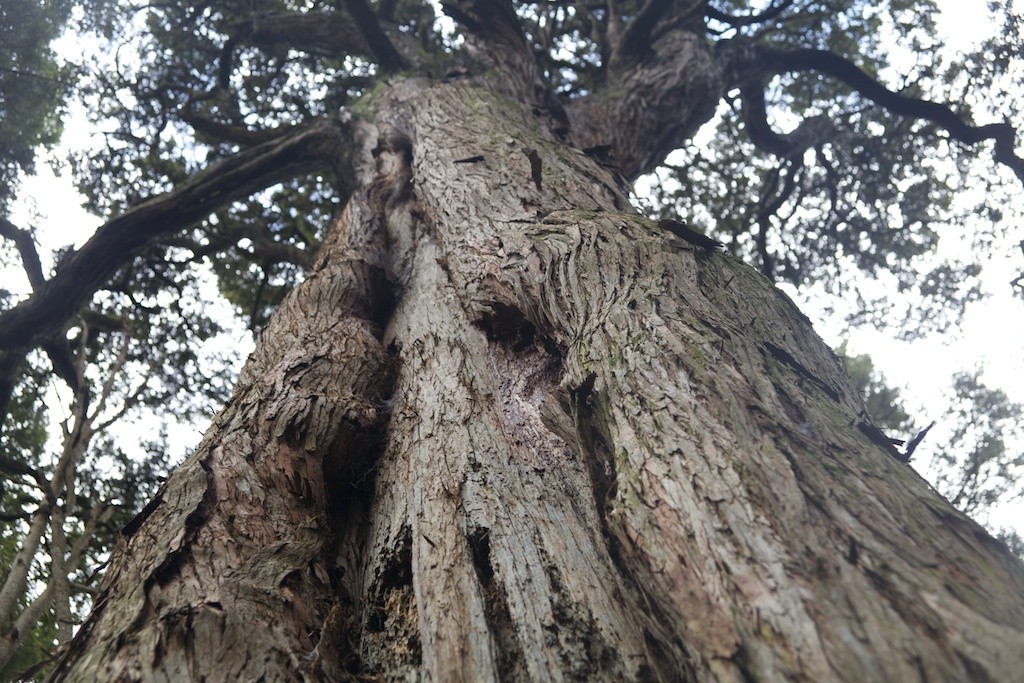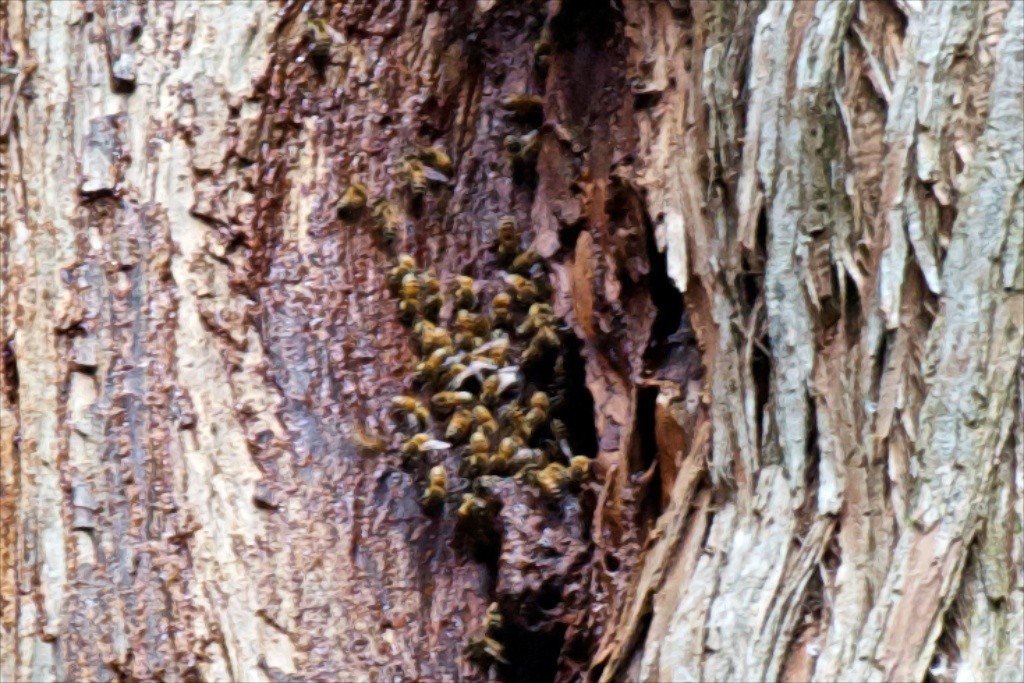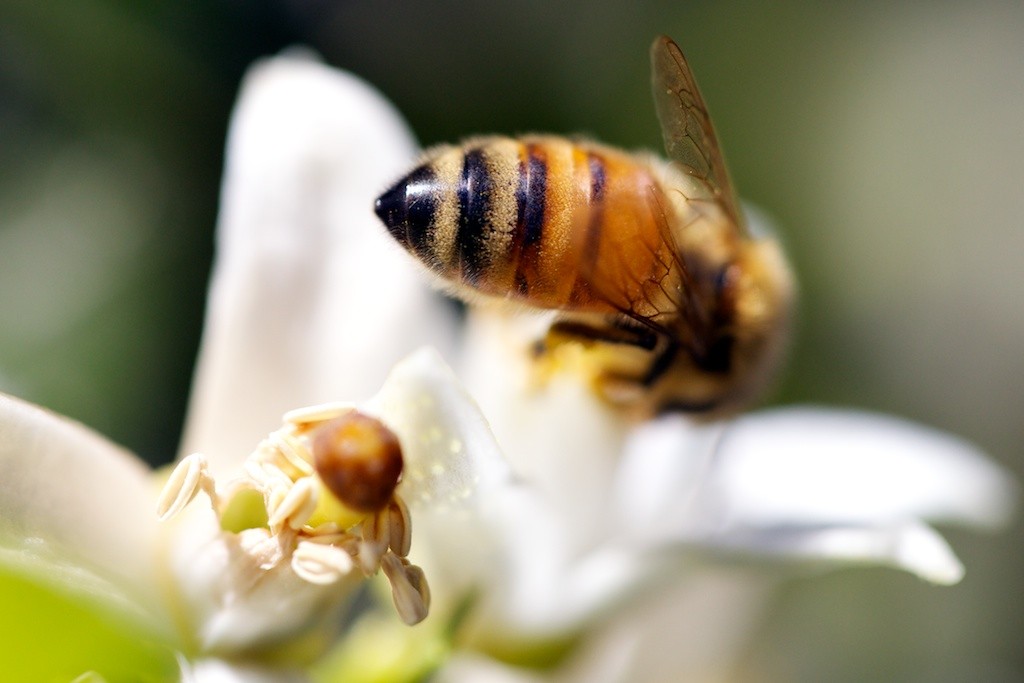So, you know how we have bees? And you remember how the plan was to bring our bees on a big adventure to Northland where they could pollinate our citrus trees and make orange blossom honey?
Well, things have changed.
A few months ago, our fellow farmlet adventurers Stephen and Deborah came up from Auckland for a visit. As is his habit Stephen ventured forth into Seven Acre Wood armed with a spade and a sack, looking for Jerusalem Cherry to massacre. As he was wandering (no doubt massacring as he went), he heard buzzing from one of the trees. Stephen is an electrician so I imagine his first instinct was to track down the electrical short, but when he looked up he saw this:
He looked even closer…
Those, gentle readers, are feral bees! Almost unheard of in New Zealand these days because of varroa destructor (yes, that is a real scientific name), a nasty limpet-like mite that attaches to bees and drains their body fluids. Varroa is in all our domesticated hives now, and the only way to keep bees alive is to use chemicals to control the mite population. It’s a bit like treating your dog for dinner plate sized fleas. Infected wild colonies die (unless they’ve had the forethought to pick up a few treatment strips from Bayer to hang in the hive twice a year). I don’t know whether the farmlet ferals already have varroa, but bringing our bees here would infect them for sure. It seems only fair to give our new friends a fighting chance.
The upshot of all this is that our bees are staying in Auckland. They are going to live with AndyMan who mowed the lawns while our old house was on the market, and fell in love with those bees. He also helped me out with the deck rail during trying times with the council building inspector and became a bit of a mate.
So although I’m sad to leave our girls behind I know they are in good hands, and if the bees in Seven Acre Wood make it through to next spring it will have been a worthwhile sacrifice. At that point the ferals might well be research worthy, and I’ll certainly be trying to create a hive from their offspring if they ever swarm.
I’ll keep you posted though because, as Winnie the Pooh once astutely said, ‘you never can tell with bees’!





Nice, the feral bees have made it into the blog and you got a big laugh from Stephen. And me too of course. It is sad that your lovely Auckland bees won’t make it to [FARMLET] Paradise but it would have been a hell of a trip up for them, not to mention you and [FORBEARING HUSBAND], so perhaps it’s all worked out for the best. Andy Mower Man sounds lovely. Fingers crossed for our Seven Acre Hive.
Glad Stephen and you got a laugh. Hopefully one day we will have honey from a hive derived from the Seven Acre bees. You’ll notice I edited your comment slightly — preserving our cover yo. x
your honey customers await their next — and new, Northland-formulated — batch with anticipation and spoons ready.
Might be a while I’m afraid. You’d best stock up on chocolate in the meantime.
Your Seven Acre Wood is so like The Hundred Acre Wood! All you need is a Bear with very little brain and it will be complete!! Xx
That is so true. A Bear with very little brain, and various coloured balloons so that we can disguise ourselves to gather Honey “How sweet to be a cloud, floating in the blue…”.